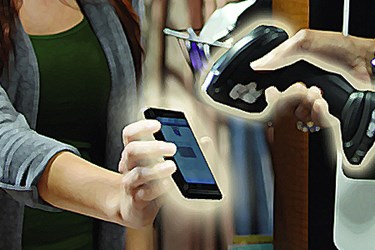Holiday Tech Winners And Losers: 'Tis The Season For Mobile, Not Voice
By Nikki Baird, Aptos

As shopping peaks ahead of the New Year, voice-enabled commerce may not live up to hype, but mobile commerce certainly will.
Holiday spending is predicted to reach over $720 billion this year between November 1 and New Year’s Eve. As shoppers hit the malls, browse websites and click through apps, retailers can be assured of two outcomes from this year’s holiday shopping blitz: mobile technology will dominate while voice may struggle to live up to the hype. Although mobile commerce is the clear winner for the 2018 holiday season, retailers should pay attention to both mobile and voice technology, as their impact on the consumers’ overall shopping journey will continue to evolve.
Speak Up: Voice Lacks Inspiration
Whether you love it or hate it, there is still more hype than reality behind conversational commerce and voice shopping, and that remains true for holiday gift giving.
Yes, thanks in part to Amazon’s Prime Day push of Alexa products, consumers are growing more accustomed to shopping by voice. We’re seeing a slight rise in voice-driven shopping in general as voice assistants’ capabilities improve, and as younger shoppers grow more comfortable with the technology. Some surveys report that 47 percent of consumers have tried voice devices for some kind of shopping-related activity (think “add to my grocery list”), while 30 percent report actually buying something through a voice device.
Despite growing acceptance, this holiday shopping season won’t be the season of voice. Twenty-two percent of Gen Xers and 17 percent of millennials said they would use the technology for holiday shopping. And overall, only 19 percent of shoppers anticipate using innovative technologies like voice-assisted shopping this holiday season. Conversational commerce adoption is still limited to reordering and restocking basic products (think toilet paper, air filters and favorite pantry items). Holiday shoppers rely heavily on exploration, consideration and comparison when choosing the perfect gifts for everyone on their list, and voice inherently doesn’t offer that inspirational shopping experience.
What’s more, many retailers are still struggling with “basic” technology, like buy online/pick up in-store, and including voice technology further complicates an already disjointed and disconnected experience. Even if consumers are ready for a hands-free holiday shopping experience, retailers still need to catch up on the back end.
Mobile Will Bring Together Offline And Online Experiences
The impact of mobile technology on retail sales is here to stay. Approximately 34 percent of all U.S. retail e-commerce sales in 2017 were conducted via mobile. Some organizations have predicted that during the holidays, mobile devices will account for as much as 68 percent of traffic and 46 percent of orders, signifying a major tipping point in mobile commerce adoption.
To account for this, in 2019 we’ll see retailers making an even greater effort to improve the mobile experience. As Aptos’ research shows, retailers’ mobile experiences tend to lag versus desktop use, and mobile apps lag even more than mobile sites do. The 2018 holiday season may well become the breaking point for retailers who have let mobile experiences lag, because retailers who can deliver on mobile are going to be the ones with a competitive advantage.
To succeed in 2019, retailers should ensure that they are getting the basics right, such as designing apps “mobile-first” and checking that all the capabilities they offer on desktop – like wish lists or e-Gift cards – work on mobile.
About The Author
Nikki Baird is Vice President of Retail Innovation at Aptos.
